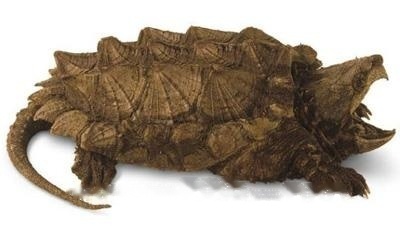
Snapping turtle
Real snapping turtles look like crocodiles fish, Set turtle and crocodile in one, so called true snapping turtle. Its head is relatively thick and cannot be completely retracted in
Alias Clearfix
English name chameleon
Weight --
Length 15~25cm
Origin Madagascar, Sub-Saharan Africa
Prices 600-800 yuan
| Stickness: | Desire : | ||
| Hair loss: | Body Odor: | ||
| Beauty Frequency: | Kids Friendly: | ||
| Yes Friendly people: | Animal Friendly: | ||
| Amount of exercise: | Trainability: | ||
| saliva level : | Cold Hardiness: | Heat Resistance: | Urban Adaptation Degree: |
| 1. Characteristics of Chameleon Chameleons are reptiles, very peculiar animals, with characteristics and behaviors suitable for arboreal life. The body is about 15-25 cm long, the body is flat on the side, the back has a spine, and the occiput on the head has a blunt triangular protrusion. The limbs are very long, and the fingers and toes are combined into two opposite groups. The front three fingers of the forelimb form the inner group, the fourth and fifth fingers form the outer group; the first and second toes of the hind limbs form the inner group, and the strange three toes form the outer group. Good for holding branches. It has a long tail that can wrap around branches. It has a long, sensitive tongue that sticks out beyond its body length. People have long believed that it has glands on the tip of its tongue that secrete mucus to stick to insects, but in fact, chameleons mainly rely on the strong suction generated by the tip of their tongue to attract prey when they hunt. Its eyes are very peculiar. The eyelids are very thick and ring-shaped. The two eyeballs are protruding, 180 degrees left and right, and can rotate freely up and down. The eyes are divided into front and back, which is not only conducive to predation, but also to detect the enemy behind in time. Chameleons use their long tongues to hunt lightning fast, taking only 1/25 of a second, and their tongues are twice as long as their own bodies. The action of walking and stopping on a tree confuses predators for leaves blown by the wind. |
| 2 , Distribution of chameleons Chameleons are mainly distributed in Africa, and a few are distributed in Asia and southern Europe. Madagascar in Africa is their paradise. The lizards are also actively calling on international organizations to protect the chameleon habitat on Madagascar. Through in-depth research on chameleon living habits, Laxworth pointed out that another function of chameleon changing body color is to communicate and convey information, which has not been found in previous research. There are about 160 species of chameleons, mainly distributed in the African continent and Madagascar, of which about half of the species live in Madagascar. In Madagascar, the world's largest and most unique chameleon community, there are 59 The species is unique to Madagascar. New species are still being discovered, or chameleons that have been misclassified as subspecies are defined as separate taxon based on genetic analysis. |
| 3. The phenomenon of discoloration The phenomenon of discoloration of chameleons and The protective and warning colors of other creatures are similar. A chameleon's skin color changes with background, temperature, and mood; males turn their dark protective colors into bright ones to warn other chameleons to leave their territory; some chameleons also turn calm green to red to intimidate the enemy. The purpose is to protect yourself from attack and make yourself survive. Discoloration can avoid predators and convey feelings, similar to human language. Chameleon is a kind of "changeable" tree-dwelling reptile. In nature, it deserves to be a "master of camouflage". In order to avoid the invasion of natural enemies and get close to its prey, this reptile often changes its body color inadvertently. Then, without moving, integrate yourself into your surroundings. "National Geographic Magazine" wrote that, according to the latest findings of animal experts, chameleons change body color not only for camouflage, but another important role of body color change is to achieve information transmission between chameleons. , to facilitate communication with peers, which is equivalent to human language, and then express the intention of the chameleon. Lacksworth found that chameleon-to-chameleon communication and expression is accomplished by changing body color, often when defending their territory and rejecting suitors. He said, "In order to show their dominance over the territory, the male chameleons will show a bright color to the same kind of demonstrations against the territory; when encountering a suitor they do not like, the female chameleon will express refusal, The body color will then become darker and show flashing red spots; in addition, when the chameleon wants to provoke a dispute and attack, the body color will become very dark. |
| 4. Reasons for discoloration The color change of a chameleon depends on the three layers of pigment cells in the skin. Unlike other reptiles, the chameleon's ability to change color depends entirely on the pigment cells in the surface layer of the skin, which are filled with different colored pigment cells. pigment. Anderson from the Department of Biology at Cornell University in New York explained in detail the "color changing principle" of chameleons: chameleon skin has three layers of pigment cells, and the deepest layer is composed of melanocytes, which carry melanin that can interact with the previous one. Layer cells blend with each other; the middle layer is composed of purine cells, which mainly regulate dark blue pigment; the outermost layer cells are mainly yellow and red pigments. Anderson said, "Based on the neurological regulation mechanism, the pigment cells will blend and transform between the layers under the stimulation of nerves, realizing a variety of changes in the color of the chameleon's body." ) |